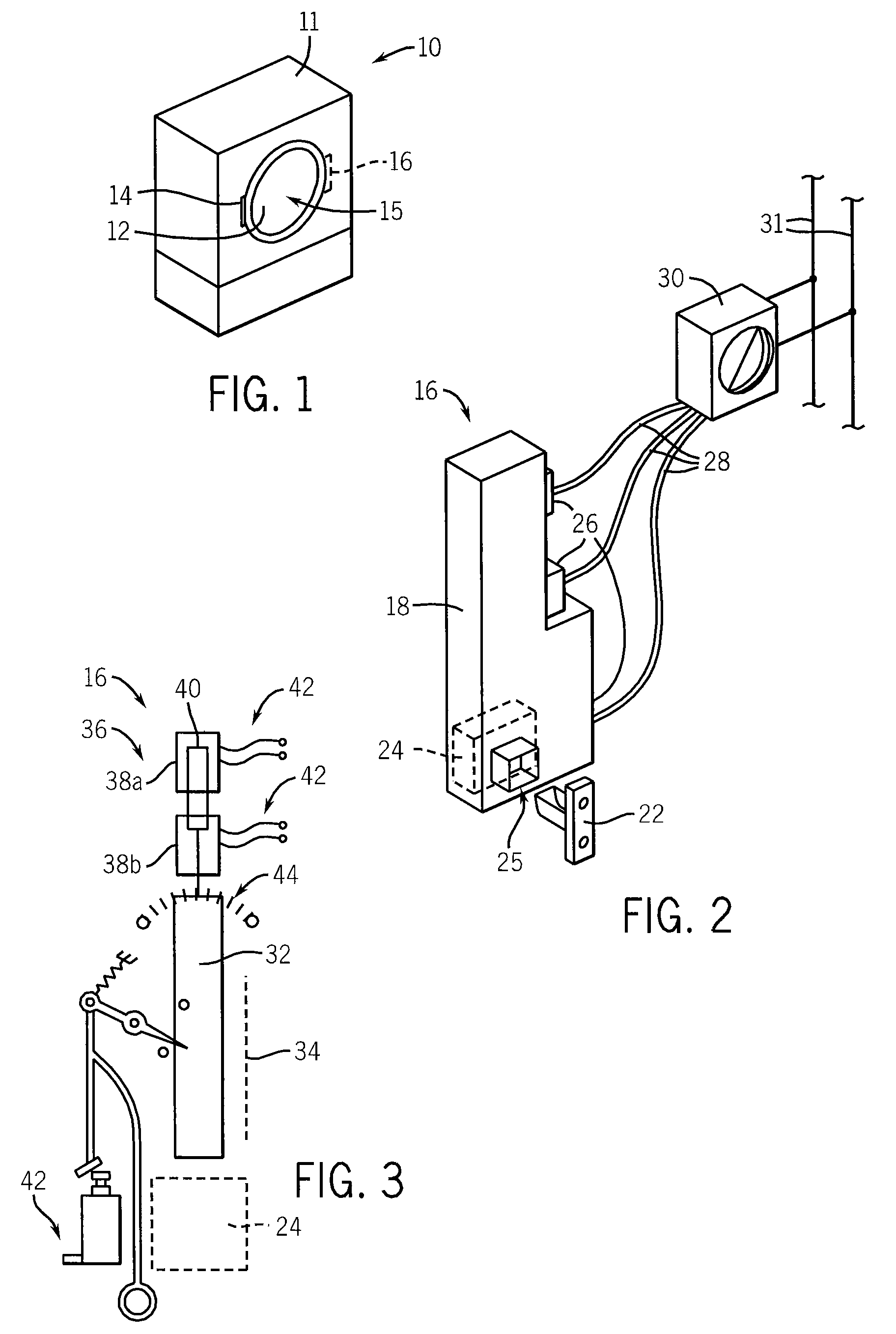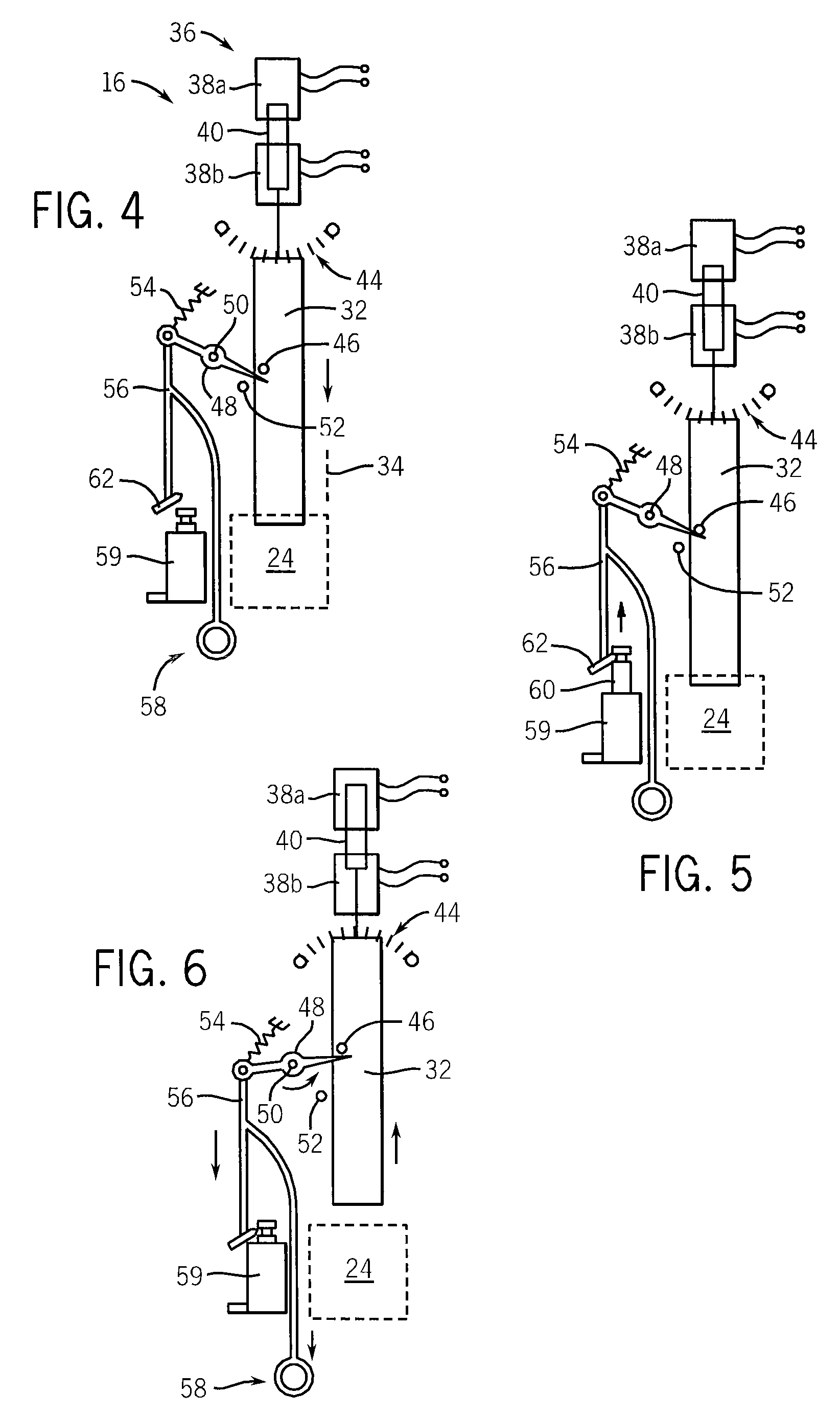Appliance latch with power failure unlock
a technology of power failure and latch, which is applied in the direction of wing accessories, cleaning using liquids, and separation processes, etc., can solve the problems of preventing rapid locking or unlocking of the locking mechanism, requiring a heating or cooling of a material, and requiring a long heating or cooling process, so as to improve the cost and power consumption quality, and the effect of quick locking and unlocking of the appliance door
- Summary
- Abstract
- Description
- Claims
- Application Information
AI Technical Summary
Benefits of technology
Problems solved by technology
Method used
Image
Examples
Embodiment Construction
[0044]Referring now to FIG. 1, a front loading washing machine 10 may provide a cabinet 11, having at its front surface a door 12, the latter opening about a hinge 14 between an open and closed position to provide access to a washing chamber 15. The door 12 may be retained in the closed position (as shown) by a door locking assembly 16 having components within the cabinet 11 and attached to a rear face of the door 12.
[0045]Referring now also to FIG. 2, the door locking assembly 16 may provide a housing 18 with an opening 25, a similar opening in the front surface of the cabinet 11 to receive a latch tongue 22 attached to the rear side of the door 12. The latch tongue 22 is releasably held by a latching assembly 24 within the housing 18. A latching assembly 24 suitable for this purpose is described in co-pending U.S. application Ser. No. 11 / 071,910 entitled: “Appliance Latch Having a Rotating Latch Hook Mounted on a Linear Slide” and U.S. patent application Ser. No. 11 / 684,287 entitl...
PUM
| Property | Measurement | Unit |
|---|---|---|
| electrical power | aaaaa | aaaaa |
| store energy | aaaaa | aaaaa |
| stored energy | aaaaa | aaaaa |
Abstract
Description
Claims
Application Information
 Login to View More
Login to View More - R&D
- Intellectual Property
- Life Sciences
- Materials
- Tech Scout
- Unparalleled Data Quality
- Higher Quality Content
- 60% Fewer Hallucinations
Browse by: Latest US Patents, China's latest patents, Technical Efficacy Thesaurus, Application Domain, Technology Topic, Popular Technical Reports.
© 2025 PatSnap. All rights reserved.Legal|Privacy policy|Modern Slavery Act Transparency Statement|Sitemap|About US| Contact US: help@patsnap.com



